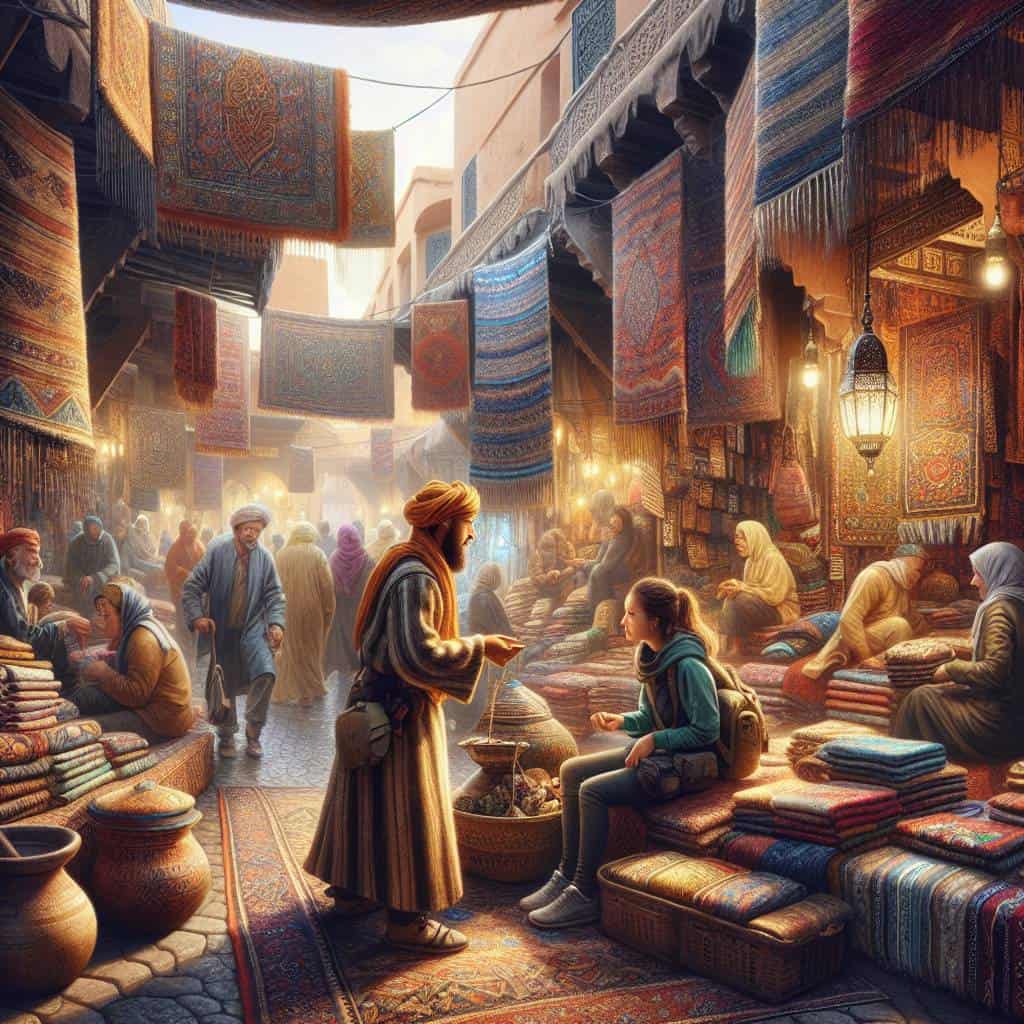I once found myself in the heart of Marrakech, attempting to negotiate for a rug I didn’t even want. The salesman’s grin was all teeth and no sincerity, a testament to my complete inadequacy in the art of bargaining. There I stood, a hapless foreigner, drowning in a sea of vibrant fabrics and the unspoken rules of the souk. My strategy? If you could call it that, consisted of awkward laughter and the hope that I’d somehow emerge with a shred of dignity and my wallet intact. Spoiler: I left with neither. The experience was a masterclass in humility, a reminder that haggling isn’t just about the exchange of money—it’s a dance, and I had two left feet.

But enough about my misadventures. This isn’t just a tale of personal embarrassment. It’s about arming you with the tools to navigate these bustling markets without losing your cool—or your shirt. I’ll share insights into the subtle art of bargaining, the cultural nuances you should respect, and some real-world tips to ensure you’re getting a fair price. Whether you’re sifting through spices in Istanbul or eyeing leather goods in Buenos Aires, this guide is your compass through the labyrinth of market stalls and vendor theatrics. Let’s cut through the nonsense and get you prepped for your next adventure.
Table of Contents
The Art of Haggling: Tales from the Market Trenches
You ever find yourself stranded in the middle of a chaotic bazaar, feeling like a fish out of water, trying to remember if you should double or halve the price the vendor is throwing at you? Welcome to the art of haggling, where everyone’s an actor in this age-old drama of buyer versus seller. Forget the glossy travel guide nonsense that tells you to smile sweetly and offer half—here’s the real deal. Haggling isn’t about knowing the rules; it’s about reading the room. It’s a dance, an intricate performance where you and the vendor both know the script, but neither of you is admitting it.
Picture this: you’re standing in a sun-drenched Moroccan souk, the air thick with the scent of spices and the sound of merchants hawking their wares. Your mission? To snag that handwoven rug at a fair price. The vendor starts high, testing the waters, and you counter with a number so low you almost blush. But here’s the trick—never let them see you sweat. It’s a poker game where the stakes are less about money and more about pride. You’ll volley prices back and forth, each concession accompanied by exaggerated sighs and theatrical shrugs, until you both settle on a number that feels like a win. Or at least, not a complete loss.
The real beauty of haggling lies in its universality. From the street markets of Bangkok to the flea markets of Paris, the dance is the same, even if the backdrop changes. And while it’s easy to get caught up in the thrill of the chase, remember this: at its core, haggling is about human connection. It’s about understanding the value—not just of the goods, but of the culture and the people who create them. So next time you find yourself in the trenches, embrace the chaos. Laugh, negotiate, and know that this age-old ritual is as much about the journey as it is about the destination.
The Art of the Deal, Bazaar Edition
Negotiating abroad is like dancing with an unfamiliar partner—awkward at first, but eventually you find a rhythm that’s as much about respect as it is about price.
The Price of Truth in the Marketplace
In this dance of dollars and change, I’ve learned that the art of negotiation is less about winning and more about understanding the unspoken rules of the market. Each transaction is a silent conversation, a cultural exchange where both parties nod to the shared understanding that everyone is slightly out to get theirs. No guidebook can truly prepare you for the nuanced choreography of bargaining, where eye contact and a half-smile can be just as effective as the perfect opening offer.
As I reflect on my travels, I realize that haggling is not just about getting a fair price, but about connecting with the people behind the stalls. These interactions, however fleeting, offer a window into the lives of those who live by the rhythm of the market, day in and day out. They remind me that beneath the surface of every transaction is a human story, as rich and complex as the goods on display. And perhaps, that’s the real treasure I’ve unearthed in this journey—an appreciation for the shared humanity found in the simplest of exchanges.


